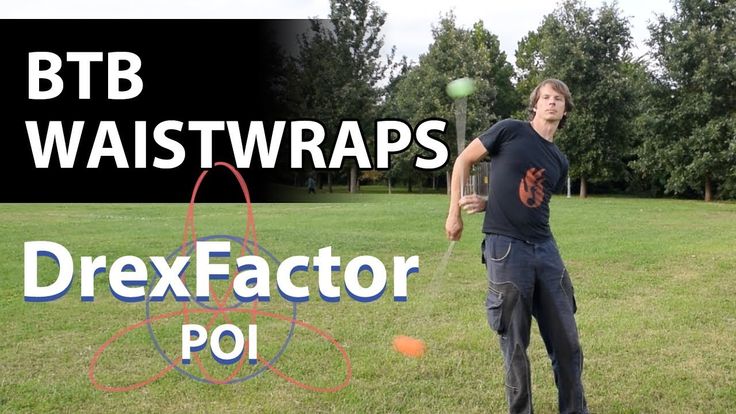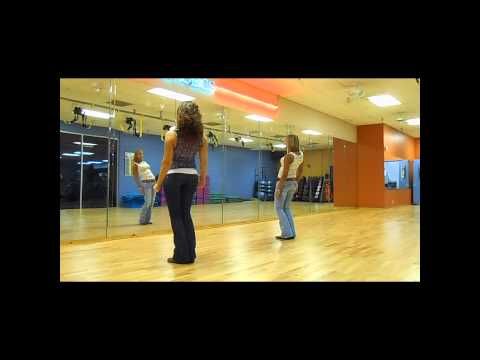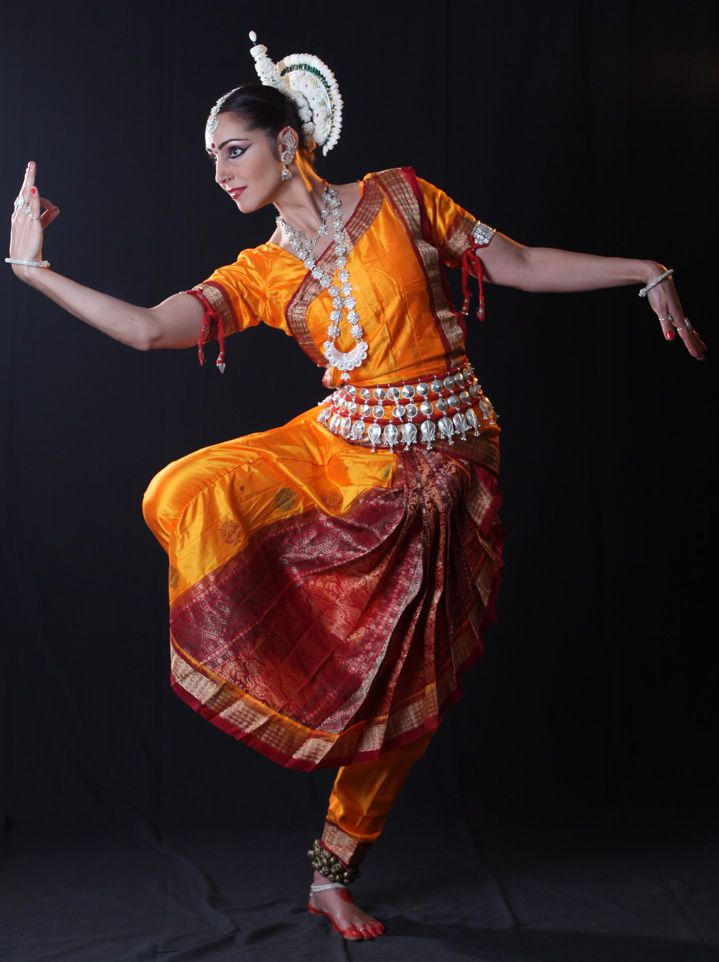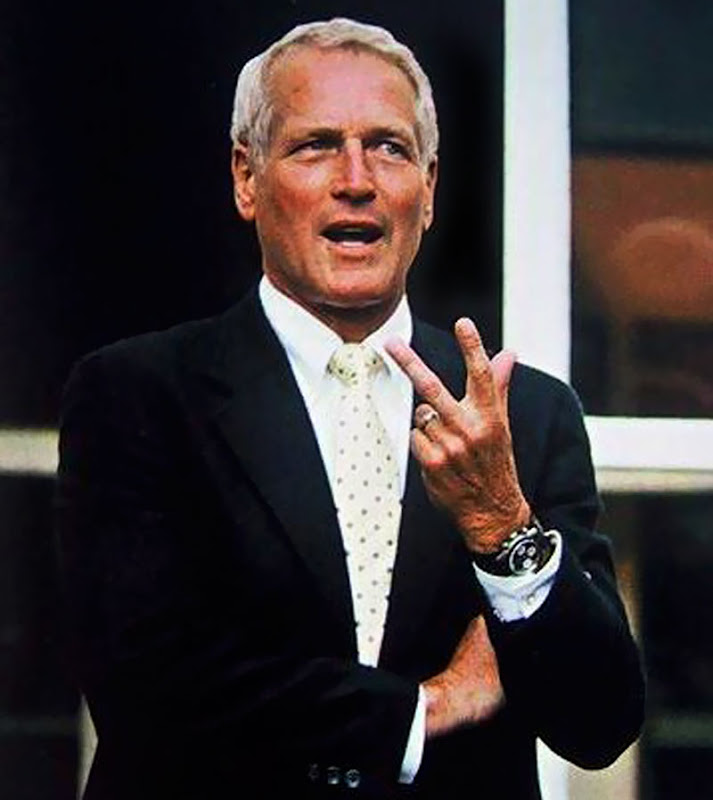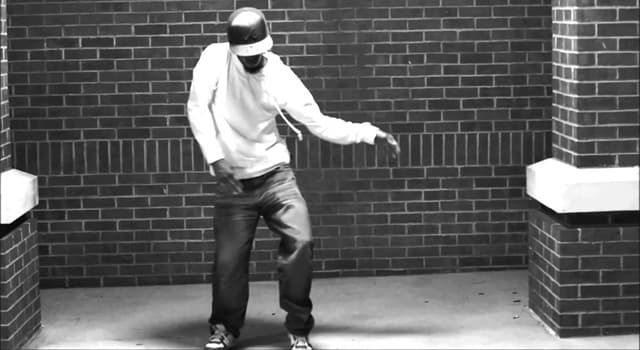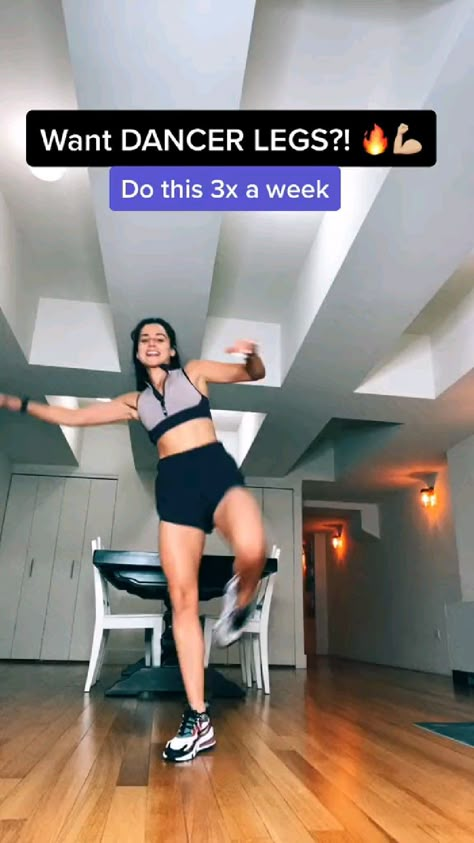How to dance charlston
How To Do The Charleston? • Learn The 20s Charleston
The Charleston dance was "The King of dances" in 20th century and had a huge influence on American culture. In this blog you can find out different ways of how to do the dance, its technique and footwork.
Charleston dance history
Charleston is a name of the city, dance style, step and song. Scholars attribute the spread and invention of the geechee inspired Charleston dance to the Jenkins Orphanage Band boys from Charleston city, South Carolina. The Charleston song written by John P. Johnson, inspired by Gullah rhythms, became the signature tune for the dance.
This dance has African roots and was created by African - American people. It was first sighted in the streets of Harlem in 1903. Though it was popularised by young flappers during 1920's. It became internationally known thanks to Josephine Baker Parisian "Le revue negre".
If you'd like to learn about the origins of the dance there is a full blog on The History of The Charleston dance.
6 version of how to do the Charleston step
In order to know how to do the Charleston “basic” step we should know that it has changed with time and place. It started as a step with twists, then transformed into a crazy wild kicking move with the swing era.
There are at least 6 versions of the “basic” step: groove walk, kicks, swinging kicks, 20’s twist, 20’s glide, and afro version “reverse twist” Charleston. Each version has its specifics.
- When doing groove walk, we should remember to keep a steady and strong bounce (pulse).
- For kicks the most important thing is to keep the right timing of the kick step and kick from the knees. All while keeping the body inclined forward and only forward and making sure to move with the kicks and not to stay on one spot.
- 20’s Charleston style with twists has its thing in a constant (every single beat) energetic though light twisting of the feet with the weight on the balls of the feet. All while making the kick up in the air and accentuating the weak (off) beat.

- 20’s glide is similar to 20s Charleston twist but is done without lifting the feet off the floor this way creating continuous gliding on the floor.
- Finally, to do the reverse Charleston twist we shall keep the legs bent low and keep the whole foot on the ground with the weight mainly of the heels.
In this video you can learn 6 basic versions of how to do the Charleston “basic” step: groove walk, kicks, swinging kicks, 20’s twist, 20’s glide, and afro version “reverse twist”.
35 Charleston variations
Here is a video of two legendary dancers Al Minns and Leon James perform jazz dances talk show "Playboy's Penthouse". You can hear Marshall Stearns discusses the dance history with Hugh Hefner. This was probably filmed around 1960. Stears explains that there were 35 variations of the Charleston step. Minns and James show a few: original 20's charleston, scare crow, squat, around the world, high kick and hand to hand variations.
This was probably filmed around 1960. Stears explains that there were 35 variations of the Charleston step. Minns and James show a few: original 20's charleston, scare crow, squat, around the world, high kick and hand to hand variations.
How to do the 20s Charleston dance style?
20s Charleston is not only a step, it’s a style. A style that is defined by music, clothing style, manner and expression. 20s Charleston was a craze during the Jazz Age. It is danced to ragtime, hot jazz and Charleston. In order to look authentic we should remember a few important technical elements on how to do the 20s Charleston:
- As it is danced to ragtime and hot jazz (early jazz, Dixieland, New Orleans jazz).
 The music is syncopated and has a “rag” rhythm though it is still quite even. The accentuation is on 2 and 4 and so will be the bounce, as the bounce always reflects the music rhythm.
The music is syncopated and has a “rag” rhythm though it is still quite even. The accentuation is on 2 and 4 and so will be the bounce, as the bounce always reflects the music rhythm. - As the music is ragged and the body can embody this quality the best when being more “puppet” like. It is better if we use more joints rather than muscles for the light, ragged, fast movements of 20s Charleston
- The accentuation is on 2 and 4 and so should be the accent when doing the 20s kicks. The accent is in the air and not on the floor.
How to achieve this light yet energetic and powerful state when dancing Charleston 20s? How to handle this hell of a tempo and curvy, twisty moves? We need to adopt the right body state. The imagery for the Charleston body that I love to use is a puppet or marionette. This loose movement, fully working on release, using movement of the joints, so that every kick and move pops to every beat and syncopation in the music.
The magic of Charleston dance is as well in the feet.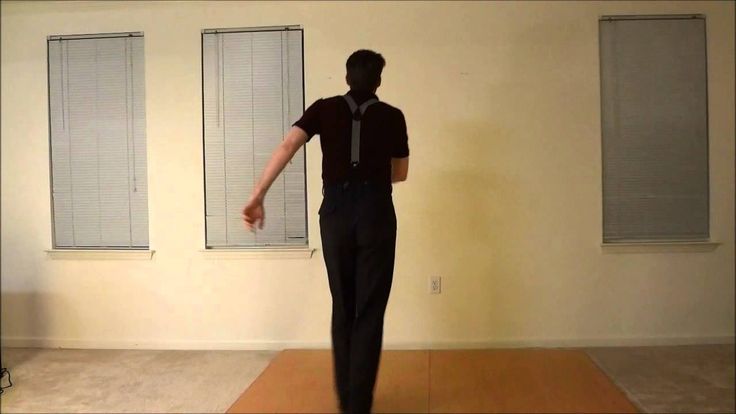 Every single step is a twist. They create that recognisable angular and asymmetric signature Charleston look. Imagine, you are dancing on a hot frying pan, how would you move your feet?
Every single step is a twist. They create that recognisable angular and asymmetric signature Charleston look. Imagine, you are dancing on a hot frying pan, how would you move your feet?
In this video below you can learn about the Charleston 20s body and the twists!
To dive deeper in the fury of Charleston footwork, try this class on Happy Feet move, one of the signature steps.
Aesthetics of the 20s
There is a lot to learn from seeing the connection of the Charleston dance aesthetics with cultural elements of 20th century America.
- Deep connection to African roots reveals elements of improvisation, spontaneity as well as grounded body position.
- There is connection with flappers and their revolutionary new image of a woman and sexually charged movements.
- Comedy connects to 20s Charleston with its silly moves and irony.
- We can see connection with silent movies through the exaggerated overly dramatic expressions.
- Finally eccentric dance is a part of this dance culture with its legomania and bizarre movements.
You will look super authentic if you will include those qualities, impressions in your dance.
Its important to mention that this dance was immensely popular during the period of 1920's Prohibition as well as 1930's Great Depression. When US stock market crashed and part of the society was left in complete poverty, dancing for many was an anti - depression pill. It swept the worries away.
Look at the fantastic Bee Jackson, the “Queen of Charleston” and get ideas on how to do the Charleston! Miss Bee Jackson of the Piccadilly Cabaret and Kit Kat Club demonstrates her gimmick - dancing on a very small floor space.
In this demo video you see me demonstrating the concept of a “Silent Movie”. I am slowing down and speeding up in the real time (without FX), while searching for exaggerated overly dramatic face expressions. The idea comes from the fact that the music was layered on silent movies after the film was done. Oftentimes the music played an atmospheric role. Therefore the dance and movements looked out of time with the actual beat of the song.
Animalism and African roots
I'd like to accentuate the connection with animalism in dance movements as the Charleston dance belongs to the family of African-American vernacular dances. To know more on what are the characteristics of African-American dances that as well reflect in the this dance, read the blog on “ A brief cultural history of black dance”
In this video class from the course Secrets of Charleston 20s, where you can learn how to do the step called the “Cow Tail”. Animalistic move, in a way it was inspired by the cows waving their tail to get rid of the flies.
All of this and more you can learn by taking a course Secrets of Charleston 20s, course with over 40 video.
Iconic Charleston dancers
Some of the iconic dancers to watch, learn and get inspired:
Josephine Baker
Ann Pennington
Bee Jackson
Al Minns
Leon James
Mildred Melrose
Joan Crawford
Jenkins Orphanage Band boys
In this video playlist on Secrets of Solo channel I collected videos of the most famous dancers, historical figures. Watch to get inspired.
The difference between 20s & 30s style Charleston
As we mentioned before the Charleston dance style has changed with time and music. I use this categories to spotlight the difference that was strongly affected by the music, more specifically rhythm section.
20s
In 20s Charleston with hot twists and eccentric moves was danced to ragtime, hot jazz music.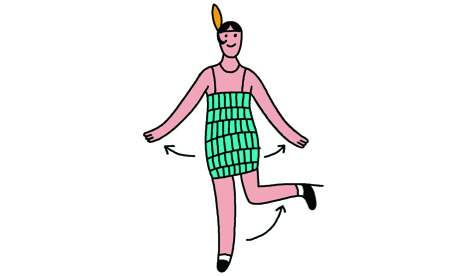 It has half time pulse and accentuated the 2 and 4 beat. It replicates the bass tuba or the double bass. Bass tuba line for early jazz was either 1 and 3 or 2 and 4. When double bass came to stage, the players wither played half time notes or doubled up on the same note twice. 1/2 feel reflects in half time pulse in the dancers body. The movement is more even, more vertical and ragged.
It has half time pulse and accentuated the 2 and 4 beat. It replicates the bass tuba or the double bass. Bass tuba line for early jazz was either 1 and 3 or 2 and 4. When double bass came to stage, the players wither played half time notes or doubled up on the same note twice. 1/2 feel reflects in half time pulse in the dancers body. The movement is more even, more vertical and ragged.
The 20s style is based on the twists and twisted kick. The most important image is the "crossed" twisted leg. The legend says, some dancers got "Charleston twist" of the knee, when they twisted too hard.
In this video you can hear a very rag song. Notice that the dancers are holding their bodies more upright. Their pulse is ragged (even jumpy at times).
30s
In 1930's the dance changed with swing music to so called lindy kicks. You could see now dancers doing big wide kicks and travelling across the floor. The feel of the Charleston is 4/4 (4 on the floor). It reflects the double bass in swing tunes, that has a walking line.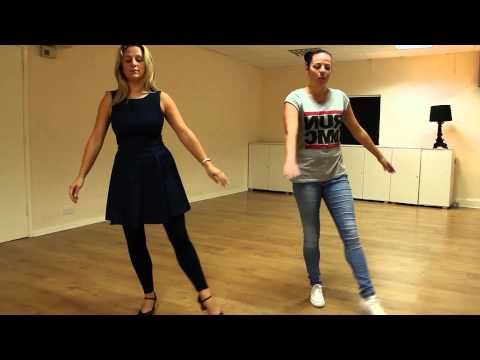 So called "walking bass". Musicians say "the bass walks", when the player hits every single note. 4/4 feel reflects in constant pulse in the dancers body. The movement is "spreading", it is more horizontal. It looks softer and smoother.
So called "walking bass". Musicians say "the bass walks", when the player hits every single note. 4/4 feel reflects in constant pulse in the dancers body. The movement is "spreading", it is more horizontal. It looks softer and smoother.
In this video you can hear the 4/4 feel on the bass and clearly see how dancers reflect it in their smooth pulse. Note, when dancers go to lindy Charleston kicks, how much they lower their upper body and start to hover over the ground.
Music to dance Charleston
Ragtime
The first tune you would think to dance Charleston to is, of course, famous ragtime tune "The Charleston", written by James P. Johnson. The Charleston beat is considered a clave rhythm.
As a musical entity ragtime was, and is, an instrumental work in 2/4 time composed for the piano. The style surfaced in the early 1900's and was developed by composer Scot Joplin. It was the forerunner to jazz. It combines a syncopated series of melodies accompanied by a steady, even rhythm. The left hand plays a steady, almost march-like succession of bass notes and chords while the right hand plays syncopated melodies in a "ragged" manner. Hence, the name of the style.
The left hand plays a steady, almost march-like succession of bass notes and chords while the right hand plays syncopated melodies in a "ragged" manner. Hence, the name of the style.
Here is a Spotify playlist of ragtime tunes. You will hear the music of Eubie Blake, Scot Joplin, James P. Johnson.
Dixieland
Other music style that one can dance 20s Charleston is early jazz. Early jazz, that is as well called “New Orleans jazz”, Dixieland jazz, hot jazz are the terms referring to the same style of jazz based on the music that developed in New Orleans at the start of the 20th century. Its 4 main influences were ragtime, military brass bands, the blues, and gospel music.
New Orleans jazz or Dixieland Jazz was incredibly popular through the 1920s, Jazz Age. One of the first uses of the term "Dixieland" with reference to music was in the name of the Original Dixieland Jass Band (later changed to "Jazz"). They recorded their first vinyl in 1917. What defines the sound of Dixieland music is that one instrument plays the melody (often trumpet) and all the other musicians improvise around it.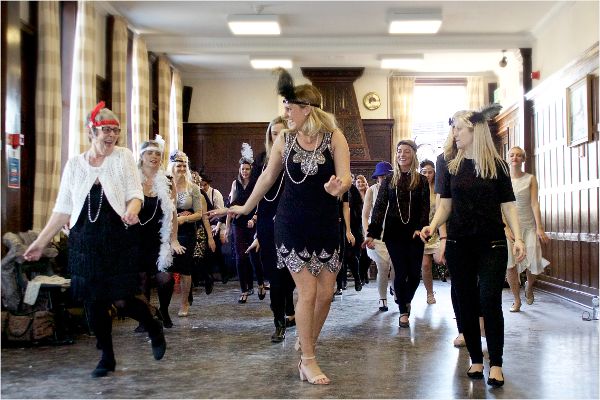
Here is a Spotify playlist with a very popular songs for 20s Charleston. You will hear music of such artists as Original Dixieland Band, Fats Waller, Sidney Bechet, King Oliver's Creole Jazz Band, Frankie Trumbauer and his Orchestra, Fletcher Henderson, Bix Beiderbecke, Jelly Roll Morton, Benny Goodman and other. Or else you can listen to my YouTube Charleston compilation.
Written by Ksenia Parkhatskaya
The Charleston Dance: Everything You Need to Know
Pictured: Ginger Rogers and Fred Astaire in a scene from SWING TIME, 1936.What is The Charleston?
The Charleston is a dance that soared to popularity in the United States in the 1920s, a time period which is commonly referred to as the “Roaring Twenties”. The initial burst of popularity for The Charleston came in 1923, when a Broadway musical called Runnin’ Wild featured a James P. Johnson jazz composition called “The Charleston”, which of course was accompanied by the dance. Runnin’ Wild had a strong run on Broadway that helped kickstart the Charleston dance into mainstream popularity.
Although the Charleston dance did burst onto the mainstream in the 1920s, it is believed that the dance was performed in the city of Charleston much earlier. In fact, the Charleston is thought to have originated within the African-American community on a small island near Charleston as early as 1903, and by 1913 the dance appeared in Harlem stage shows.
Still, though, there is no doubt that once Johnson’s composition “The Charleston” and the accompanying dance appeared on Broadway in 1923, the dance was poised to be performed by people all over, with a surge in popularity that lasted up until 1927.
While the Charleston dance did peak in popularity in the late 1920s, it did evolve a bit over the years. In the 1930s and 1940s it became part of the Lindy Hop street dance, and an alternate version of the dance developed that was adapted to the swing music that was popular at the time. The 1930s and 1940s style of Charleston dance is commonly referred to as either Lindy Charleston or Swing Charleston.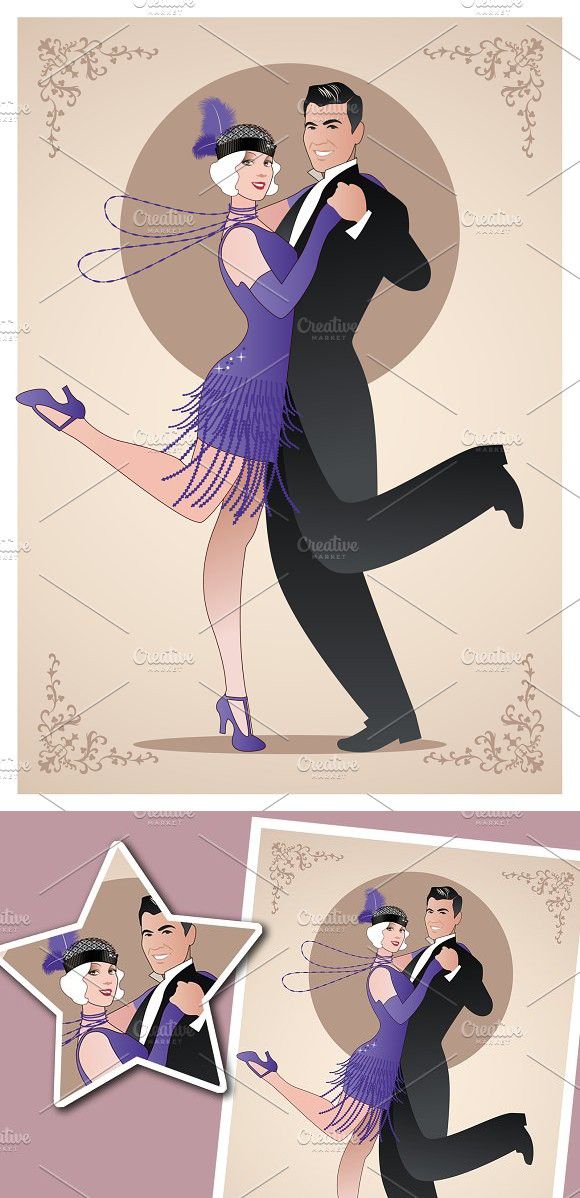
A deeper look at the origins of the Charleston dance
The origins of the Charleston dance can be traced way back to African-American culture in Charleston, South Carolina in the mid 19th century. In particular, the steps associated with the Charleston are rooted in the African-American dance called the Juba, which originated with Kongo slaves that were brought to Charleston and was danced on plantations in the Lowcountry.
At the time that the Juba originated, there were no rhythm instruments allowed because plantation owners were afraid that the slaves would communicate secret messages if they had instruments. Thus, the dance itself was the main source of music for the original Juba dance.
By the mid-19th century, the Juba dance developed musical accompaniment and paved the way for the development of many important cultural dances, which of course includes the original Charleston dance. One of the lesser known facts about the Charleston dance, is that before reaching Broadway, The Charleston was danced among dock workers in the Holy City, which not coincidentally is where “The Charleston” composer James P. Johnson said he found inspiration for the song.
Johnson said he found inspiration for the song.
It is believed that the version of the Charleston that appeared in the 1923 Broadway musical Runnin’ Wild was specifically choreographed to achieve mainstream popularity, which probably contributed to the widespread prominence of the Charleston in the 1920s, especially among young women (known as “flappers”). The short, above-the-knees dresses that young American women wore in the 1920s allowed for easy range of movement and made dancing the Charleston easy and fun. For this reason, the Charleston was actually banned in many dance halls as the time because it was believed to be too risque and revealing.
How to Charleston Dance
Figuring out how to dance the Charleston isn’t all that hard when you realize this isn’t 1923 anymore and we’ve got things like Youtube to guide our way. There are a few different types of Charleston dance, depending on whether you’re by yourself, with a partner, or with a group, but the basic steps are the same across the board.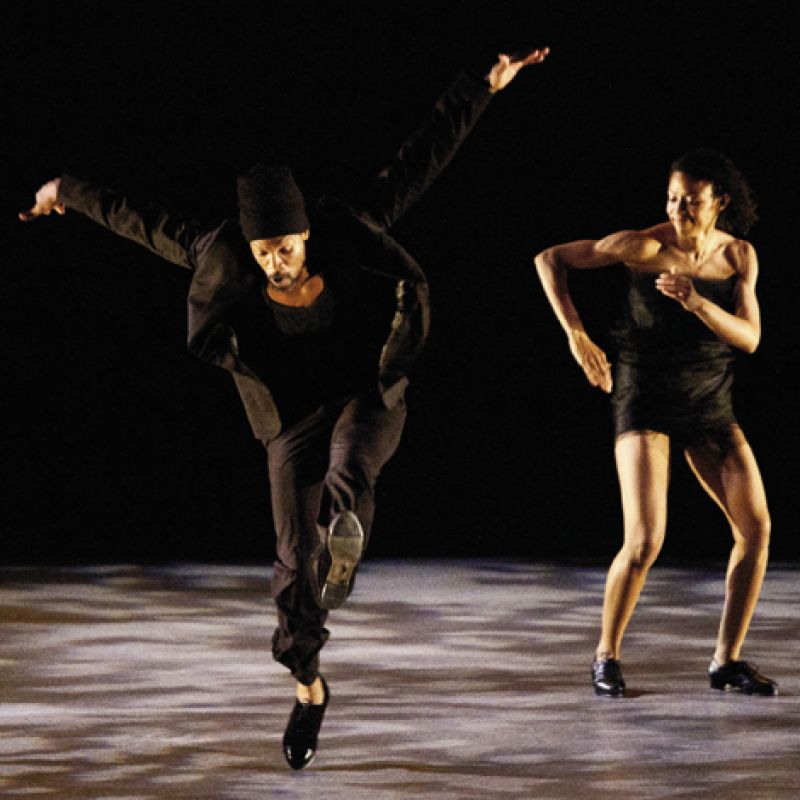
Before you watch the Youtube video that breaks down all the different ways to dance the Charleston, let’s go through the basic steps so you have an idea of what you’re getting yourself into:
- Begin standing flat on your feet, with your palms facing the floor
- Put your left foot forward, and then move your right foot in front of that, giving your left foot a tap with the heel of your right foot.
- Move your right foot back, and followed by your left foot, and tap the heel of your right foot with your left foot.
- Swing your arms side-to-side as you go.
- To bring out the jazziness of the Charleston, twist on the balls of your feet as you go through the steps, and move your knees in and out.
Ok, I understand learning how to dance the Charleston by reading a list of steps is difficult, so watch the video below to really learn how to do it.
What type of music is the Charleston danced to?
While you can always dance the Charleston to the original James P.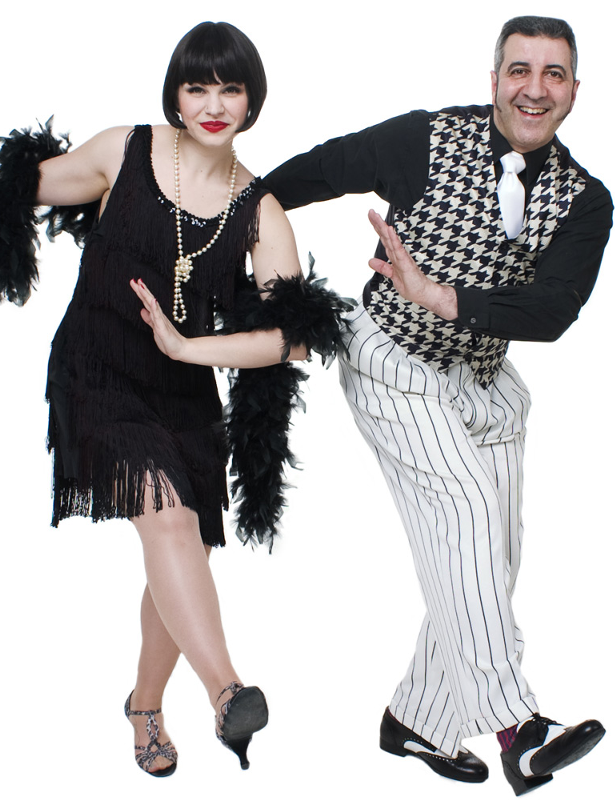 Johnson composition, that might get boring after a while. The Charleston can be danced to basically any ragtime jazz music in an upbeat 4/4 time signature. That might be gibberish to some of you reading this, so we went ahead and made it nice and easy.
Johnson composition, that might get boring after a while. The Charleston can be danced to basically any ragtime jazz music in an upbeat 4/4 time signature. That might be gibberish to some of you reading this, so we went ahead and made it nice and easy.
Enjoy a Spotify playlist filled with hand-picked Charleston dance music below, which Spotify user John Bell created to bolster to his swing music at swing dances and parties. Stream some Charleston dance music below, and practice those moves!
Types of modern dances. Charleston dance.
The Charleston is a dance named after the city of Charleston in South Carolina. Rhythm gained ground in US mainstream music with the premiere of a show on Broadway called "Runnin' Wild", which debuted the song "Charleston" written by James P. Johnson and became an immediate hit.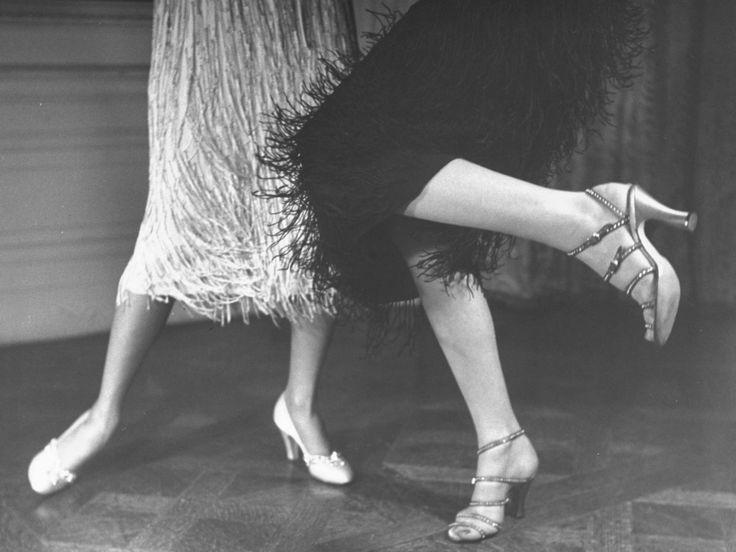
It is impossible to name the exact place where the dance originated, although today in the city of Charleston, South Carolina, they will not only tell you that the dance was born here, but they will even demonstrate a specific place - an orphanage "Jenkins Orphanage" - according to legend, it was the orphans from this orphanage who invented the dance, later called the Charleston, the music on the basis of which formed the basis of the musical, which became zamenimy.
And its existence is recognized long before the triumphant appearance on the stage of the musical “ Runnin’ Wild ”, where, along with the debut of James P. Johnson’s song “ Charleston ”, the dance of the same name was performed. However, it was from this moment that the popularity of the Charleston began to rapidly gain momentum.
At first, this dance was mostly associated with young emancipated girls, who were called flappers (from the English - cracker), it was they who could afford to dance alone and demonstrate contempt for the old traditions in the dance.
Despite accusations of immorality and swagger, undermining the foundations of the nation's spirituality, all segments of the American population were carried away by the Charleston. There was no official Charleston training in dance classes, so wealthy people began to take lessons from their own servants: cooks, maids and laundresses, who mastered this dance much faster.
In general, there was nothing complicated in the performance of the dance. He was considered easy to learn, it was only necessary to learn how to make energetic movements with his arms and legs to fast music. On the other hand, the number of injured people has increased due to the irrepressible desire to put all the available energy and strength into the Charleston.
Charleston was a new dance. The Charleston was a fast dance. The Charleston was a simple dance. The Charleston was a dance that could be danced with a partner or alone. But most importantly, the Charleston was the first dance to blur the line between "dance being danced" and "dance being looked at" - by 1925, it seemed that everyone danced it.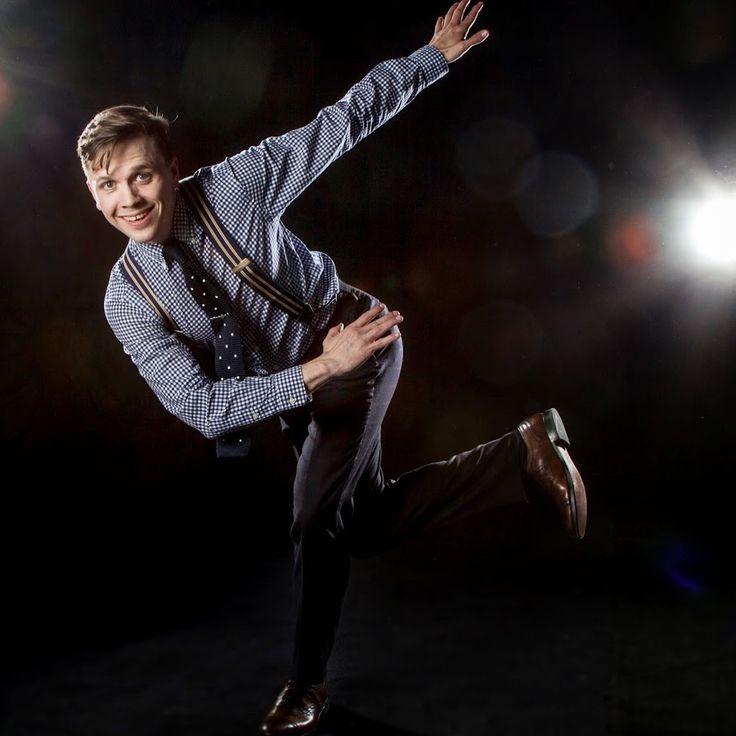
Dance Critic Roger Pryor Dodge recalled a police officer in St. Louis who directed traffic by dancing the Charleston.
Charleston, unlike other dances, became both spectacular and performing: it could be danced and watched. Charleston was brought to Europe by Josephine Baker , it was in her performance that the Parisian public saw this dance for the first time. Thanks to her, dance in Europe has become no less popular than in America.
Charleston technique
Charleston has a syncopated rhythmic structure, 4/4 time.
They dance the Charleston both in pairs and solo. The basic step is performed in place or moving forward, backward and to the side. The step begins with an off-beat movement, when the heels are parted, the support is on the left leg, and the right one simultaneously rises in a bent position with a twist to the right and back.
The same movement is carried out with the other leg. The off-beat movement is performed with closed knees. Hands move freely and vigorously.
The off-beat movement is performed with closed knees. Hands move freely and vigorously.
The basic step can be performed by moving back and forth and sideways, as well as turning around its axis. The dance requires a lot of improvisation and, if performed in pairs, the main move varies in the positions of the partners and combinations of movements.
Charleston Features
Vigorous hand movements and characteristic foot turns are the main features of this dance. It has certain features of ballroom choreography, namely, the foxtrot, with the difference that the Charleston has a limited nature of movement and is performed most often on the spot. The musical accompaniment is represented by certain compositions of jazz and swing.
Despite its scandalous reputation, at the beginning of the last century Charleston became the king of dances. Having begun his victorious march in America, he conquered Europe somewhat later. It was impossible not to be infected by the desire to dance this provocative, easy-to-perform dance. Chalston was performed both in pairs and individually.
It was impossible not to be infected by the desire to dance this provocative, easy-to-perform dance. Chalston was performed both in pairs and individually.
Ballrooms and hotels regularly held dance competitions showing hundreds of variations of the basic Charleston step (officially there were 74 movements in the Charleston).
One of the most famous Charleston competitions was held in 1925 at the Orpheum Theater in Kansas City. It was won by Leonard Reid , the future creator of Shim Sham .
Unfortunately, Leonard did not manage to get his award - the competition was “only for whites”, and although he managed to participate in it thanks to his fair skin, someone envied his win and gave his secret to the organizers of the competition
Charleston was the king of dances - but it also suffered the fate of any "fashionable" phenomenon - in 1926 a new "fashionable" dance arose - Black Bottom , and the Charleston was to be forgotten, just as were previously forgotten Bunny Hug , Apache Dance and many more.
Salvation came in the form of a new trendy dance - Lindy Hop , which incorporated many of the Charleston movements. And thirty years later, when the Lindy Hop went out of fashion, the Charleston returned again - this time in the form of two rock and roll dances - Charley Bop and Mashed Potato, which did not last long, however.
And then another fifty years passed - and Charleston began to dance on both sides of the ocean again ...
Dance clubs and schools
Types of dance 9000
9000 9000 9000 You're viewing: do_dance_charlston.html
NewOldUsefulUseless
Page 1 of 1
Write a review
History of dance. CHARLESTON
Dance history. CHARLESTON
REFERENCE: CHARLESTON.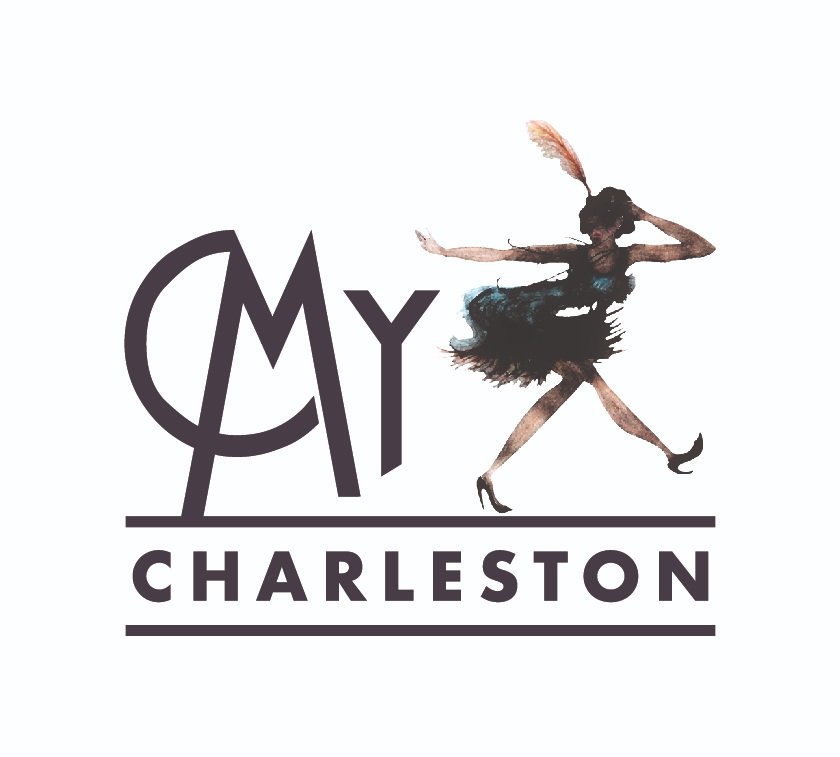 American ballroom dance of the 1920s and 30s in the character of Ragtime. Time signature - 4/4. The pace is fast. The basic step consists of eight counts and is danced together with partner or alone. The dance is characterized by sharp syncopated steps and swivel on the balls of the feet.
American ballroom dance of the 1920s and 30s in the character of Ragtime. Time signature - 4/4. The pace is fast. The basic step consists of eight counts and is danced together with partner or alone. The dance is characterized by sharp syncopated steps and swivel on the balls of the feet.
Charleston - one from the progenitors of Lindy Hop , which appeared in 1930s (a transitional form between they are considered Breakaway ). Spread in the 1930s and 40s a slightly different form of the Charleston that leans towards the Lindy Hop. In this later form of Charleston, the rhythm of 1920s hot jazz was adapted to the music swing of the 30s and 40s.
Dance The Charleston style has several common names, most commonly used "Lindy Charleston", "Savoy Charleston", "Charleston 20's", "Charleston 30s and 40s”, “Swinging Charleston”.
Charleston considered one of the forerunners of the Quickstep ballroom dance.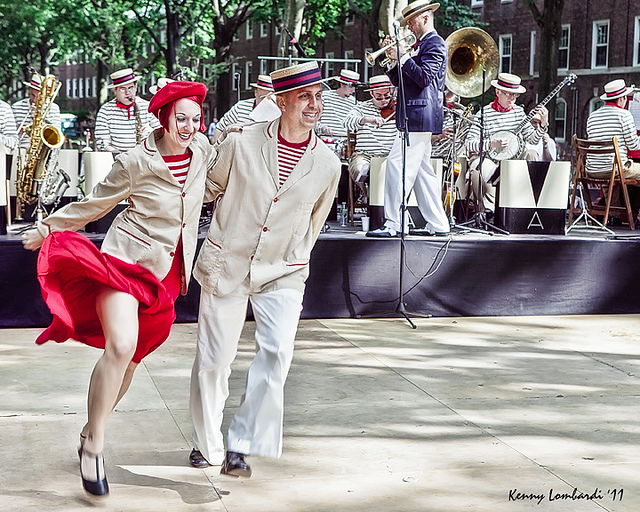
This is where I talk about Charleston on Rank Cocktail: a dance that became popular in the 20s of the last century, in the jazz era, "speakers" and "flappers". For Americans, these are symbols of that era. "Speakeasy" - an underground bar where you could drink alcohol during the period of the "dry law", and " flappers " (from the word flap - cotton) called emancipe women, who cut their hair short in an a-page style, smoked, drove cars, listened to jazz, drank alcohol and wore a certain style of clothing.
"Flapper" often translated as “cracker”, and although this is a correct and almost literal translation, a closer translation of this word is “dummy”. We can easily learn flapper fashion. Eye-covering hats, short dresses with straight silhouette, a long string of imitation pearls casually thrown over shoulder fox skin or ostrich feather boa, cigarette in a long mouthpiece, lips painted with a bow and blackened eyes . .. In general, if you watched the Soviet film "12 chairs", then you know that Ellochka the Cannibal and Fima Dogs dressed like typical flappers, only they themselves are unlikely to talk about it. guessed. In the US, flappers and Charleston are inseparable.
.. In general, if you watched the Soviet film "12 chairs", then you know that Ellochka the Cannibal and Fima Dogs dressed like typical flappers, only they themselves are unlikely to talk about it. guessed. In the US, flappers and Charleston are inseparable.
Charleston danced to ragtime in a fast 4/4 tempo. He was literally indiscriminate hobby. In the view of young people, this dance expressed a protest against the foundations of the then society and allowed others to demonstrate their emancipation.
Origin and history origin of the dance
That the Charleston has African-American roots is beyond doubt. However, unequivocal there is no data on where and how this dance originated. Some sources called the birthplace of the Charleston island of Cape Verde, others - the port city of Charleston (South Carolina), where, according to one version, Negro dockers in minutes of rest danced, repeating energetic simple movements with their feet, and on the other - a dance invented by children from an orphanage. Whatever it was, but the name of the dance associated with the name of the city of Charleston. And its existence is recognized for a long time before the triumphant appearance on stage musical “Runnin’ Wild” , where together with the debut of James P. Johnson's "Charleston" was a dance of the same name. However, it was from this moment that the popularity of the Charleston began to rapidly gain momentum.
Whatever it was, but the name of the dance associated with the name of the city of Charleston. And its existence is recognized for a long time before the triumphant appearance on stage musical “Runnin’ Wild” , where together with the debut of James P. Johnson's "Charleston" was a dance of the same name. However, it was from this moment that the popularity of the Charleston began to rapidly gain momentum.
| American woman teaching English boys to dance the Charleston. Great Britain, 1925 |
First in more degree, this dance was associated with young emancipated girls, who were called flappers. They were the ones who could afford to dance one by one and demonstrate in the dance contempt for the old traditions. In spite of accusations of immorality and swagger, undermining the foundations of the spirituality of the nation, Charleston was carried away by all segments of the population of America.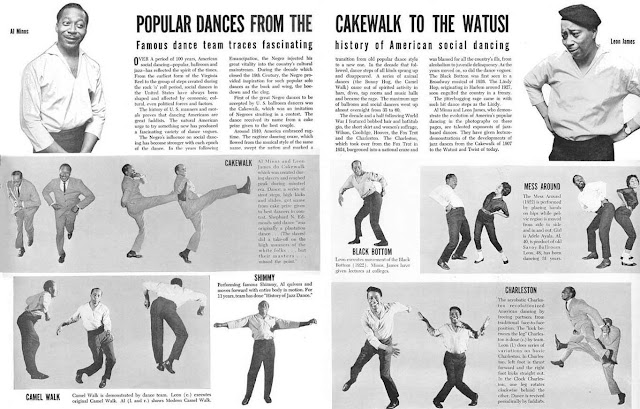
Charleston fell in love with men , because here they could show their strength and masculinity, and women - they removed corsets, layered skirts and dark cotton stockings. Short dresses, silk stockings and bandeaus are in fashion!
| Charleston Champions in New York City, 1926 is so popular that everyone danced it - even the police and janitors, the Crown Prince of Great Britain was also seen dancing it. But at the same time there was no not a single official dance school where one could learn how to dance the Charleston. Therefore, wealthy people began to take lessons from their own servants: cooks, maids and laundresses who mastered this dance much faster. Unlike other dances, Charleston became both spectacular and performing: its could dance and watch. Passion wave this dance reached Europe in 1925 , when the legendary Josephine Baker. Despite scandalous reputation, at the beginning of the last century Charleston became the king of dances. Dance specificity Charleston was performed solo, in pairs or in a group. In general, there was nothing complicated in the performance of this dance. He was considered easy to learn, it was only necessary to learn how to make energetic movements with his arms and legs to fast music. It is impossible not to be infected by the desire to dance this perky, easy-to-perform dance! #CatDanceStudio, #Dnepropetrovsk, #charleston, #flappers, #jazz, #jazz_epoch, #charleston, #flapper, #speakeasy, #dixieland, #ragtime, #USA, #lindyhop, #lindyhop Popular entries from this blogContemporary street dance styles. |
 Her triumphant performances in Paris and Berlin blew up society!
Her triumphant performances in Paris and Berlin blew up society! 